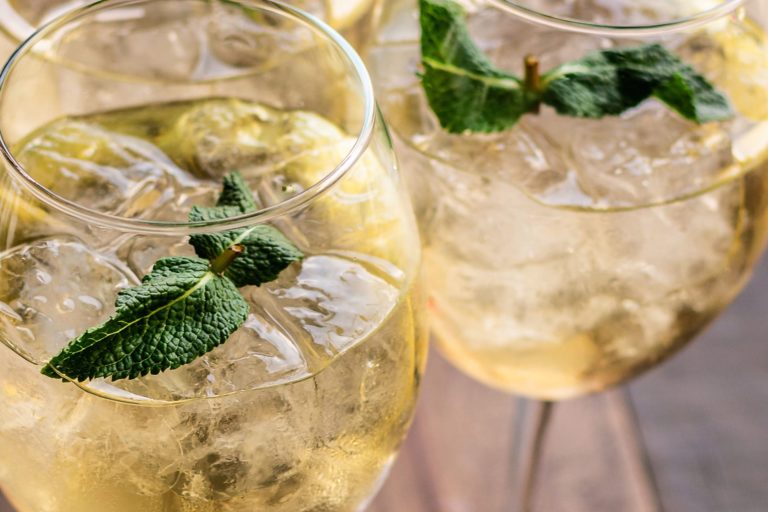How the famous Hugo cocktail was created
Over the past two decades, the Hugo cocktail has grown in popularity, becoming a staple on cocktail menus worldwide, especially in the early 2010s. Its mild sweetness coupled with its fresh and sparkling character made it the ideal drink for warm summer evenings. But where does the popular cocktail actually come from and how did it find its way into people’s bars and hearts?
The origins of the Hugo cocktail
It all began in 2005 in South Tyrol, Italy, in Naturno to be precise. Roland Gruber, a bartender based here, was looking for an alternative to the usual summer drinks like the Aperol Spitz or the Mojito. In his search for a new, refreshing change, he composed a fresh, floral and sparkling cocktail of elderflower syrup, mint, lime, prosecco* and mineral water.
The origin of the name
People like to speculate about the origin of his name. However, Gruber himself said that this is a randomly chosen name and has no meaning.He chose this one because it is short and therefore easy to remember. Moreover, the simplicity of its name perfectly symbolizes the lightness and simplicity of the cocktail.
The spread of the Hugo
After its invention, the Hugo quickly spread throughout South Tyrol and became a popular cocktail in the bars and restaurants of the region. The booming tourism and the rich gastronomy of South Tyrol eventually brought the cocktail to the wider regions of Italy.
The Hugo conquers Europe
In the years that followed, the drink eventually caught on throughout Europe. Especially in Germany, Austria and Switzerland, it quickly became one of the most popular summer drinks. The uncomplicated preparation and the simple, readily available ingredients also ensured its rapid spread.
As the popularity of the Hugo grew in Europe, it became a popular summer drink in other countries as well. It gained a permanent place on the cocktail menus of the United States, Canada, Australia and South Africa.
Variations cocktails to the Hugo
Due to the easy preparation and the manageable ingredients, there are now countless variations of the cocktail. If you prefer a less alcoholic option, you can simply replace the prosecco with a light white wine or even non-alcoholic sparkling wine.
Another option is to use the commercial syrup replace with fresh elderflower syrup. This is much more elegant in flavor and can be made quite easily yourself. Another option for even more flavor variation comes from combining different herbs like rosemary or basil.
If you want to try an original Hugo, you should go for lemon balm syrup instead of elderflower syrup. However, this is difficult to obtain. However, doing it yourself is also worthwhile here.
Conclusion
It started in South Tyrol, but within a few years the Hugo cocktail has become a worldwide phenomenon. Its ease of preparation and variety of variations have made it a global classic.
